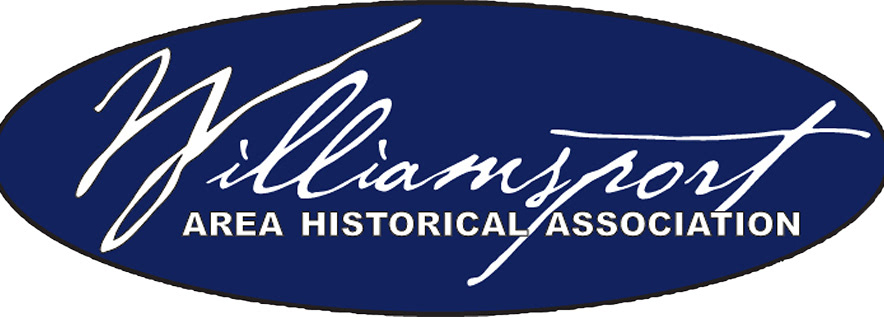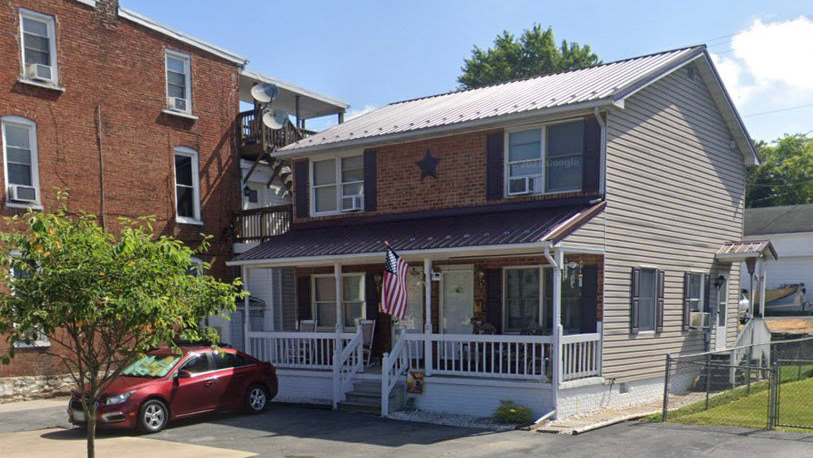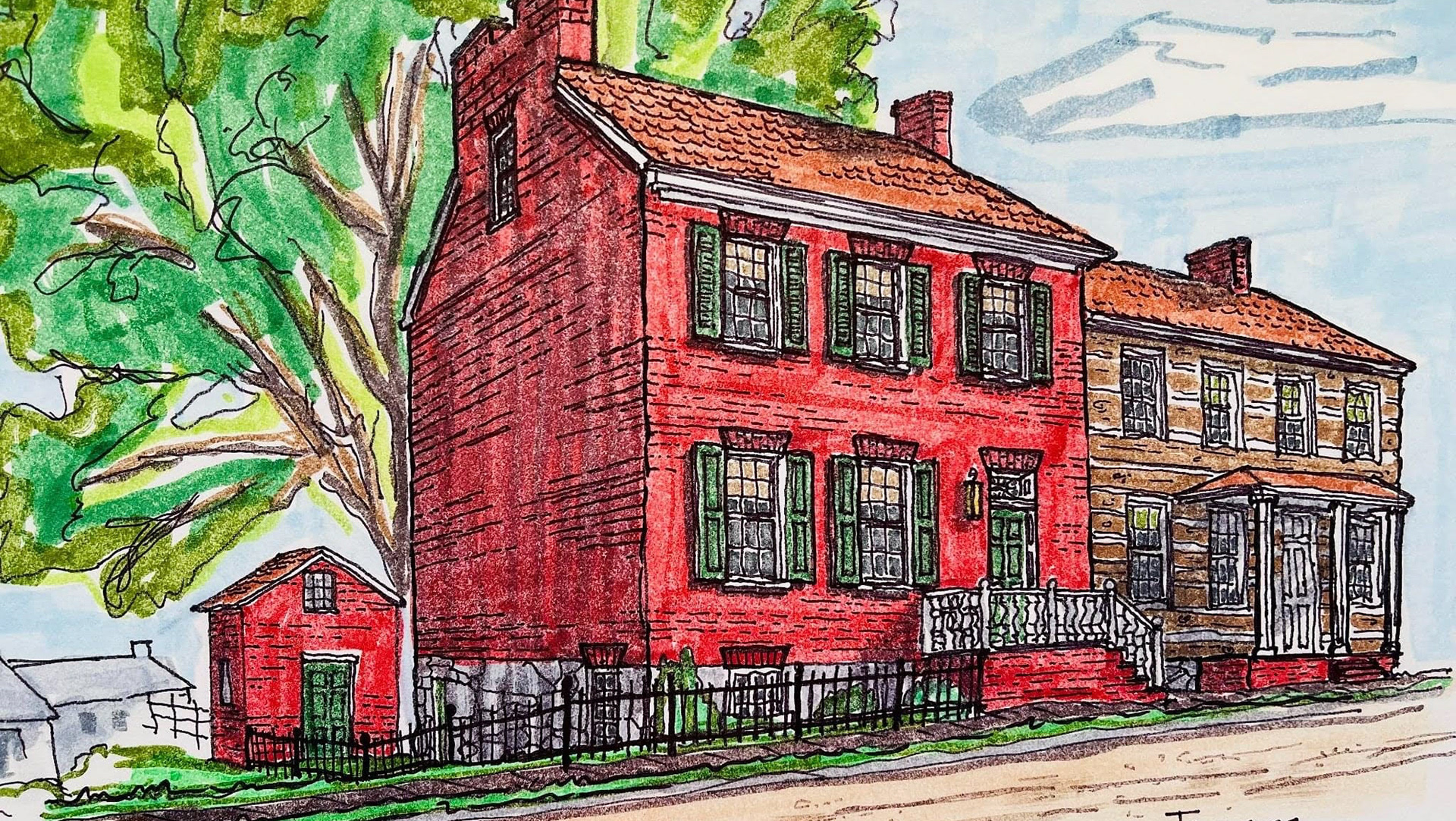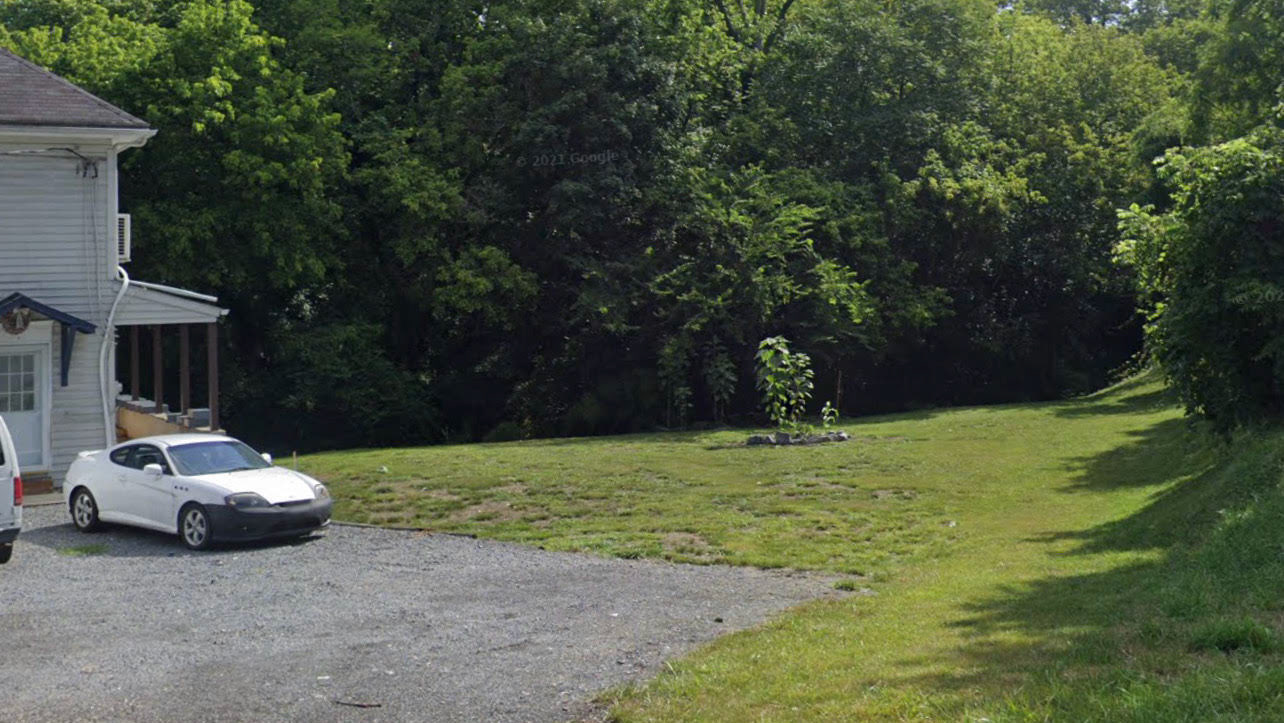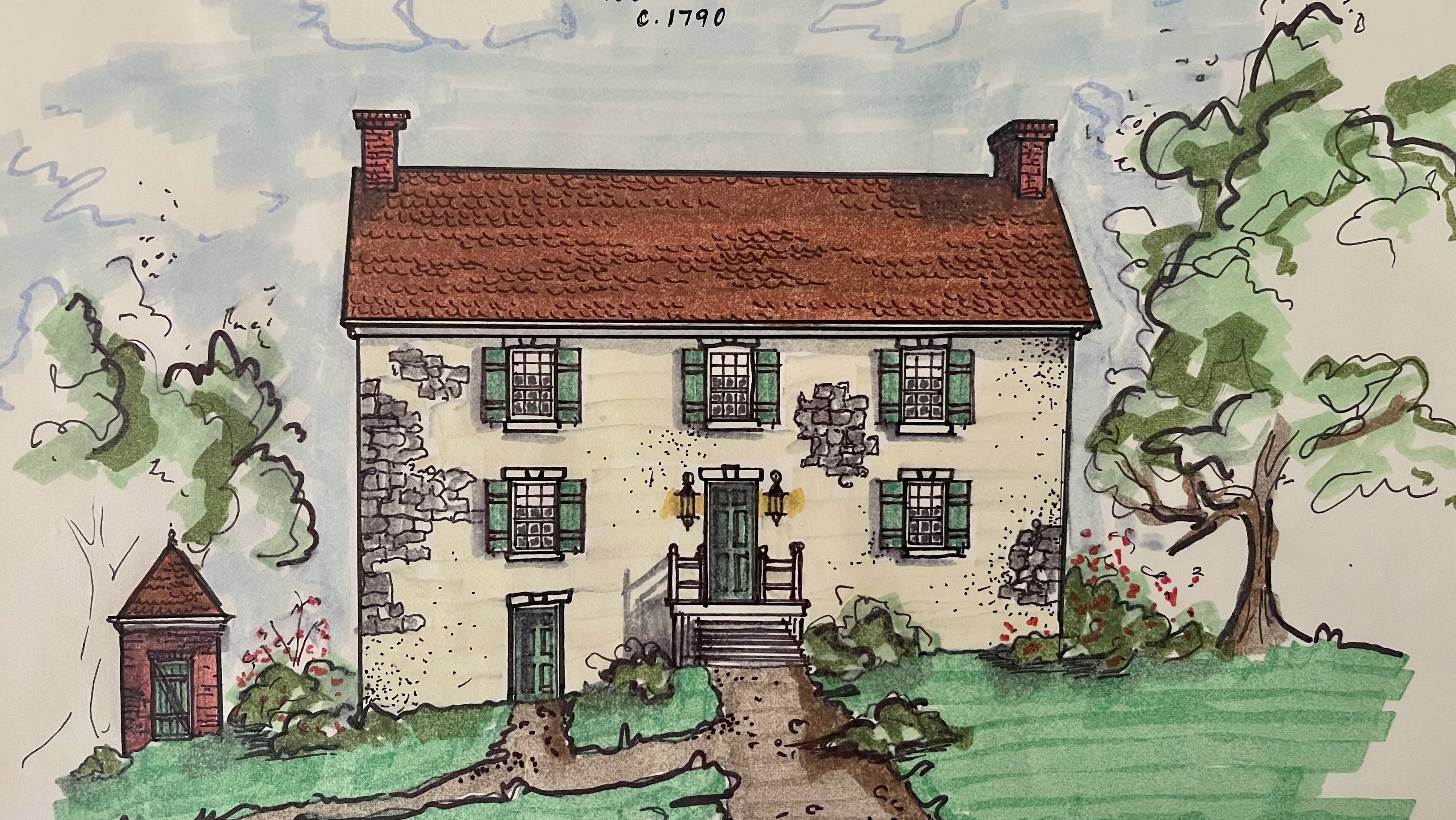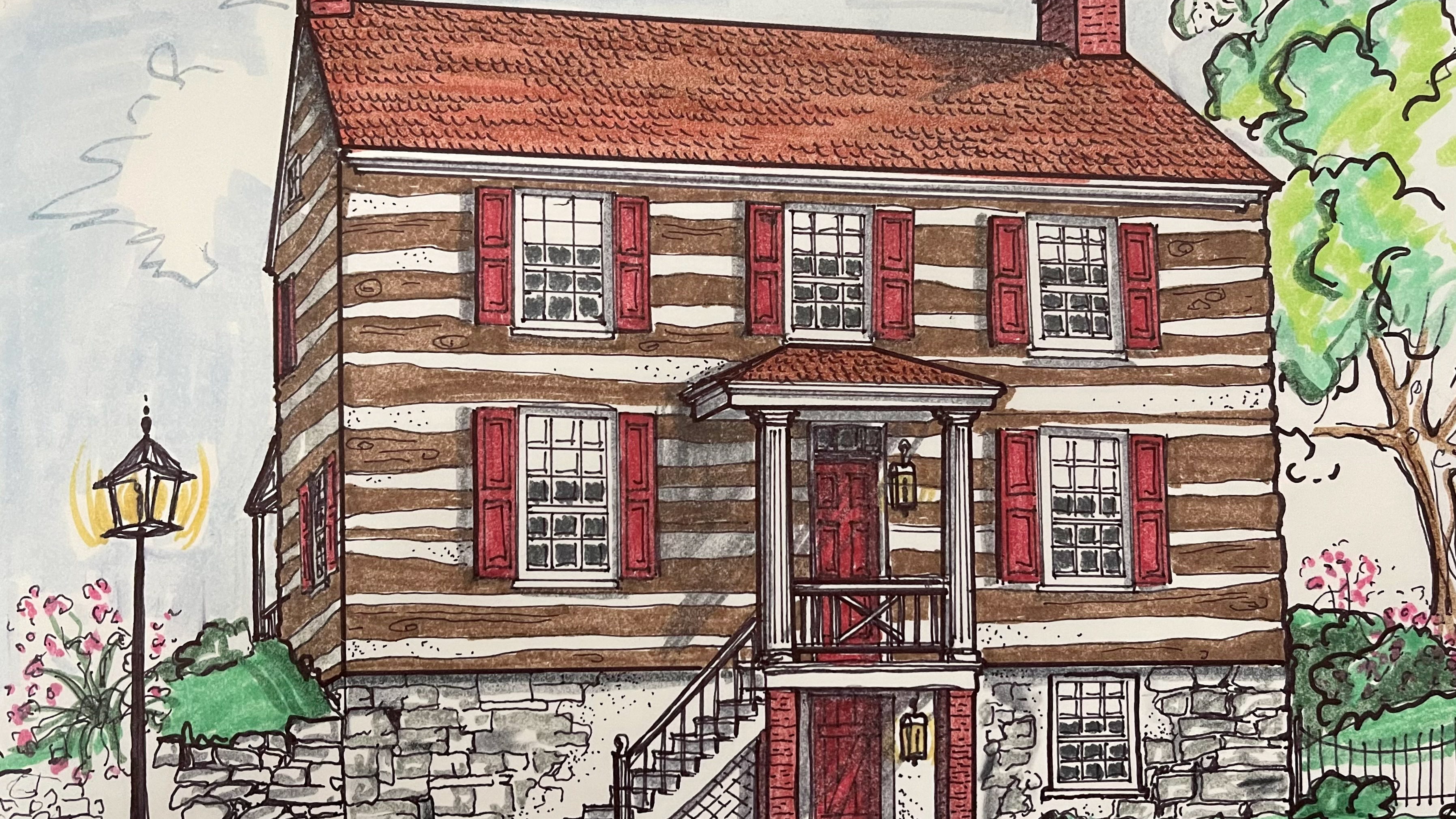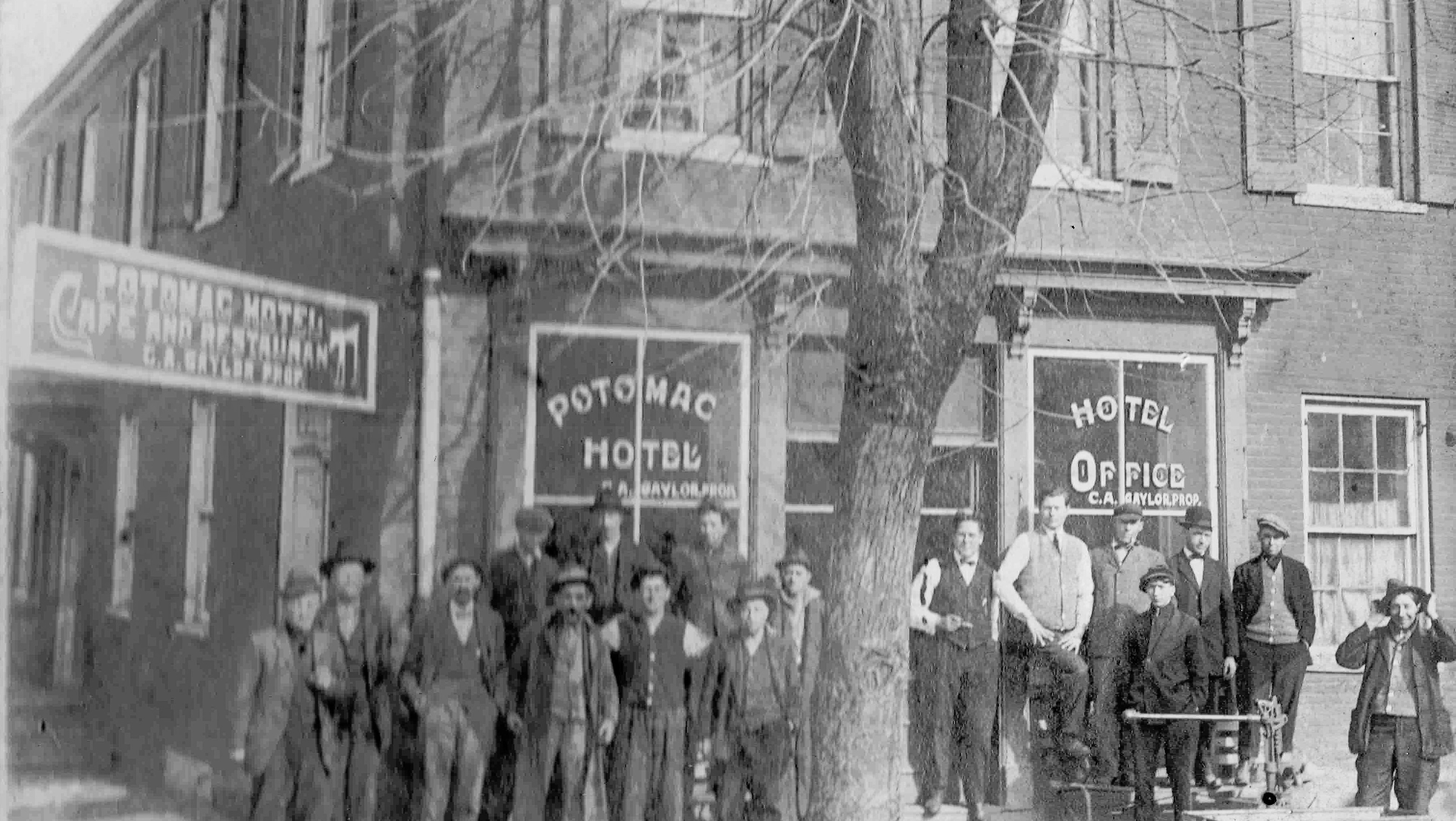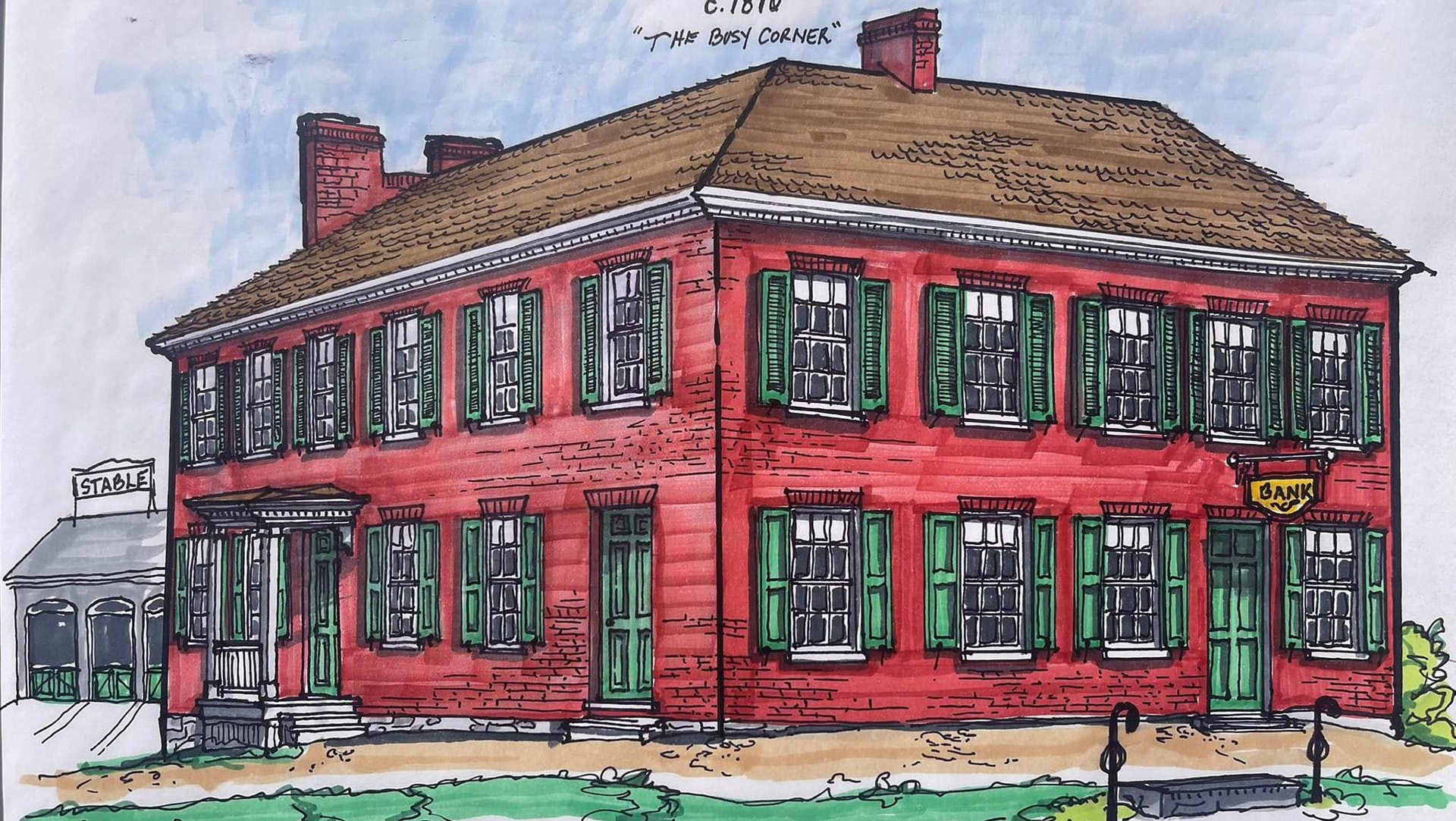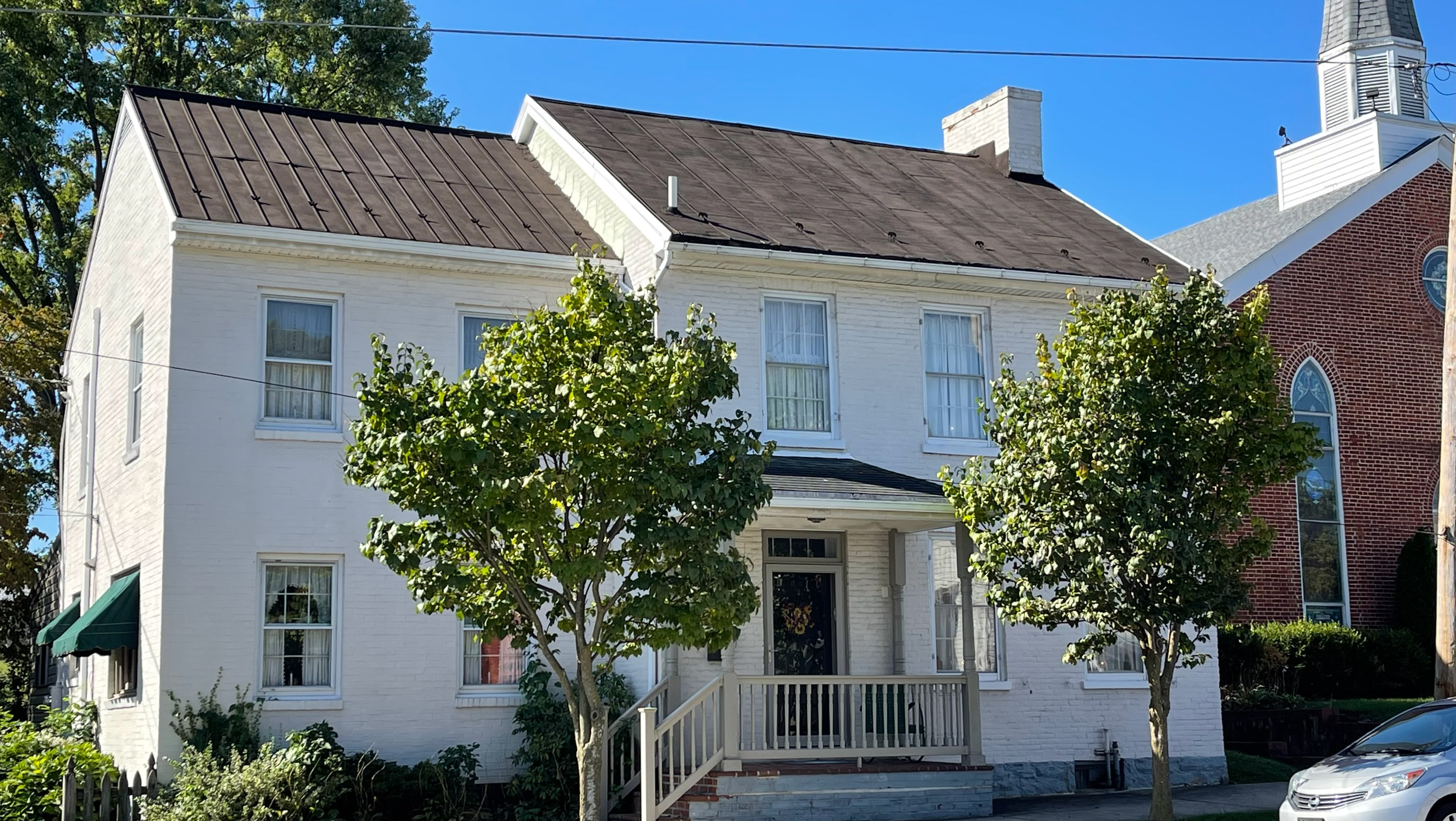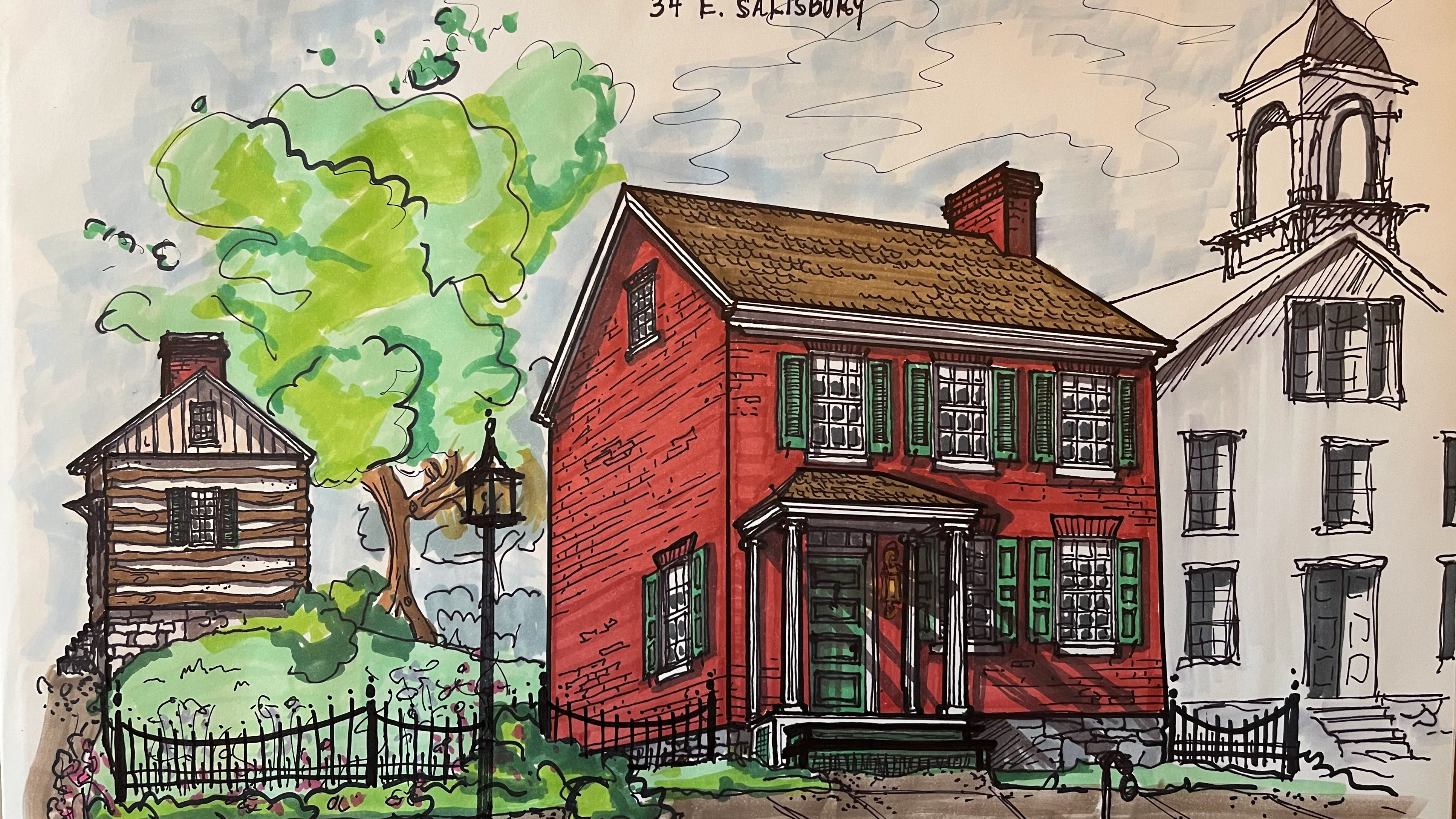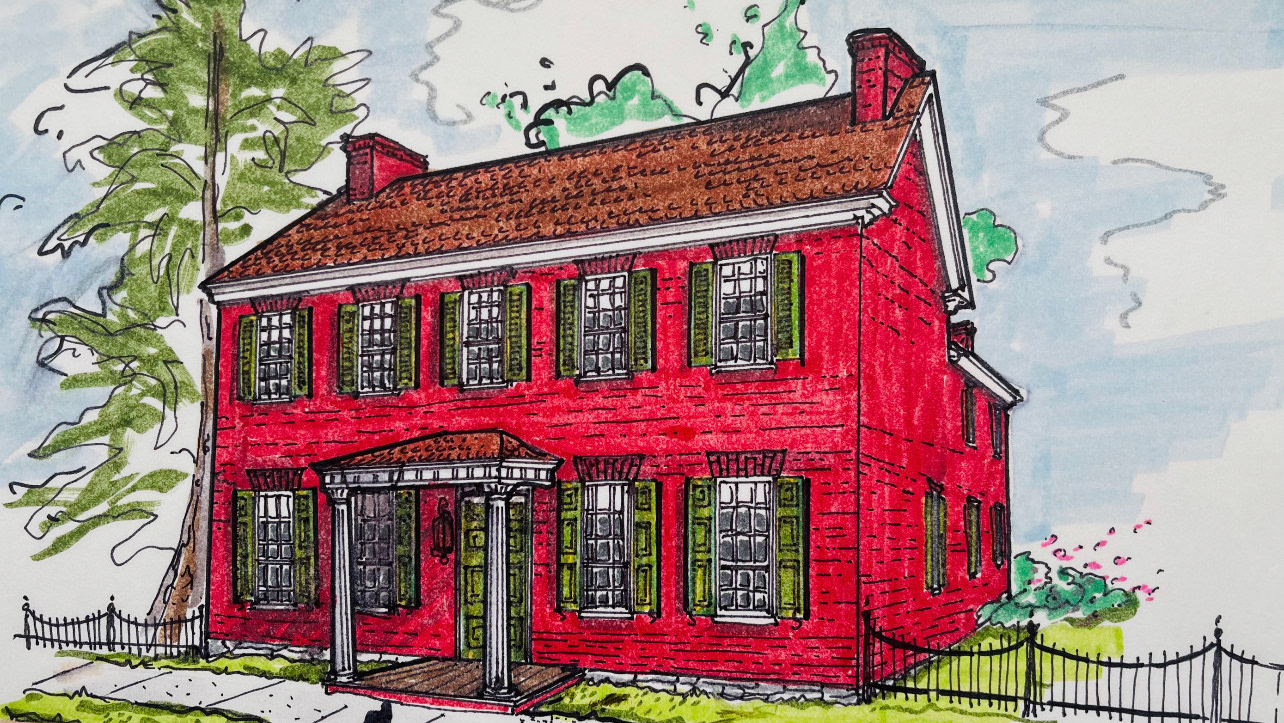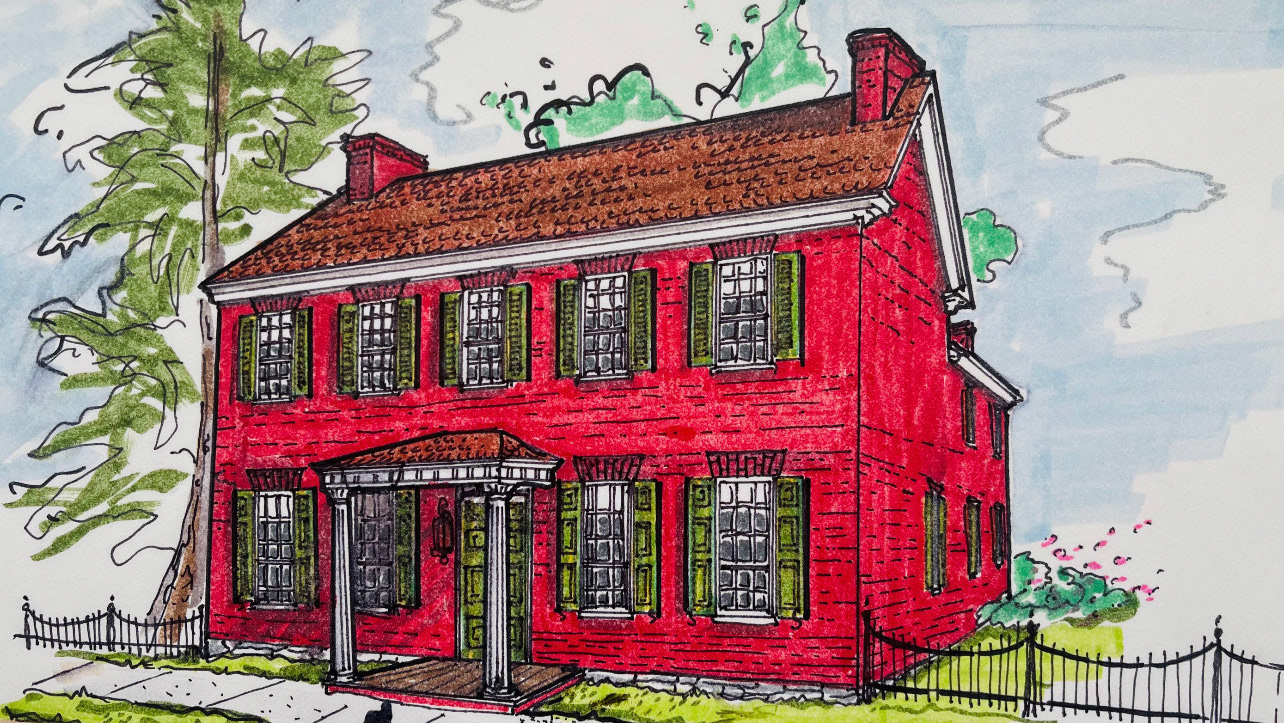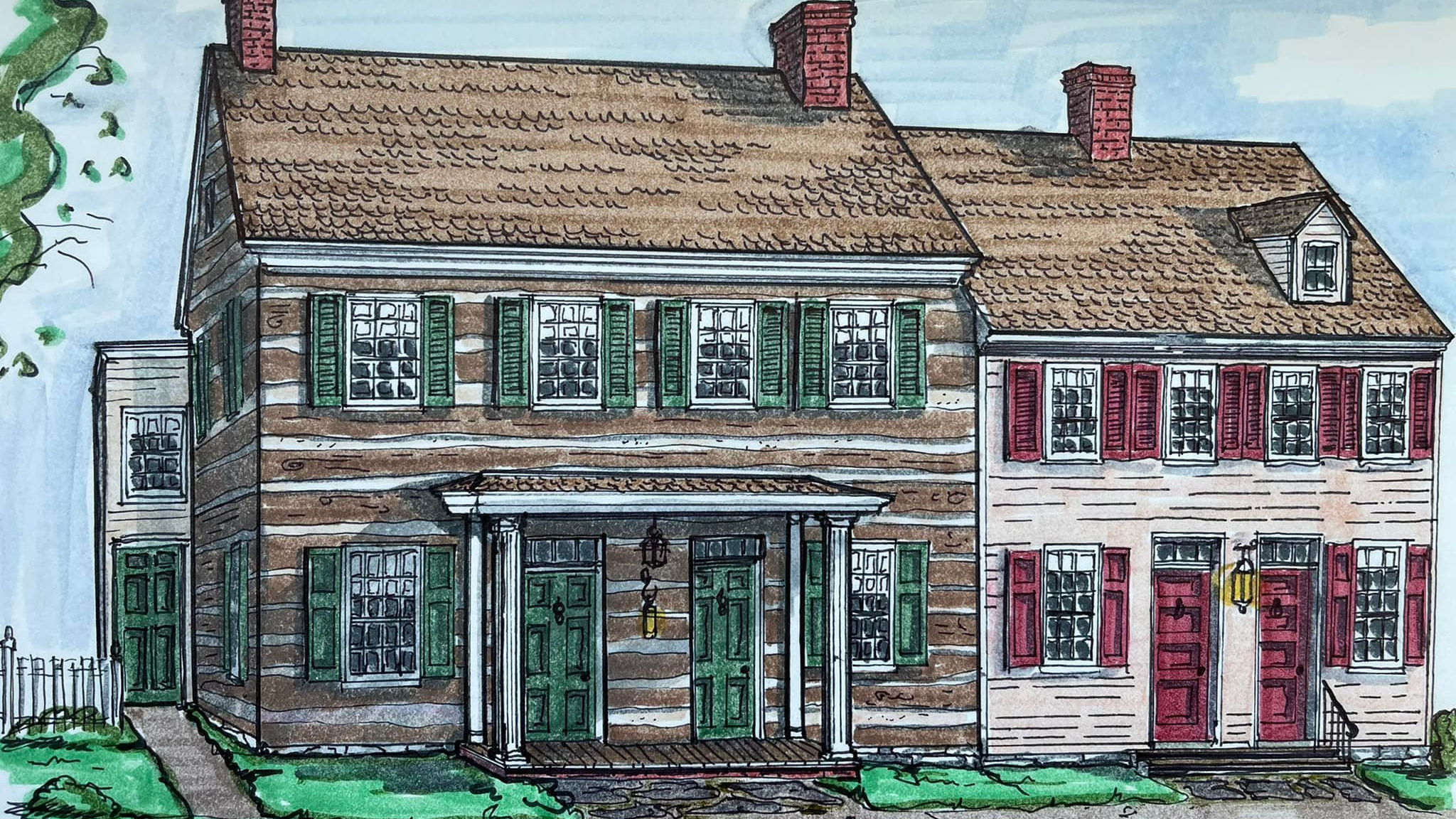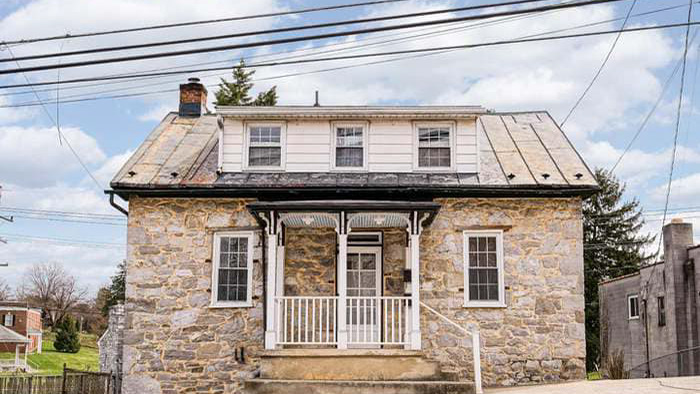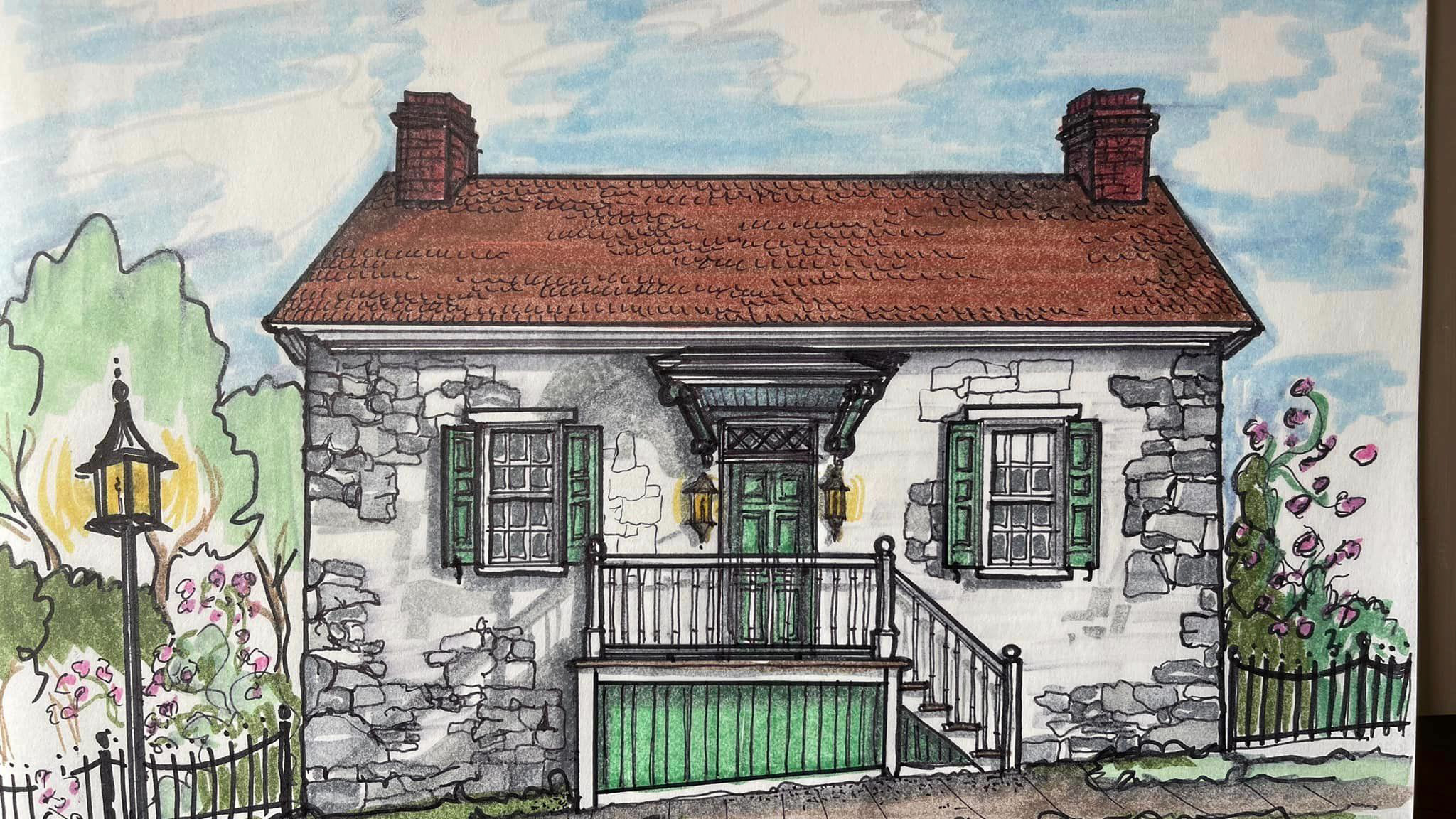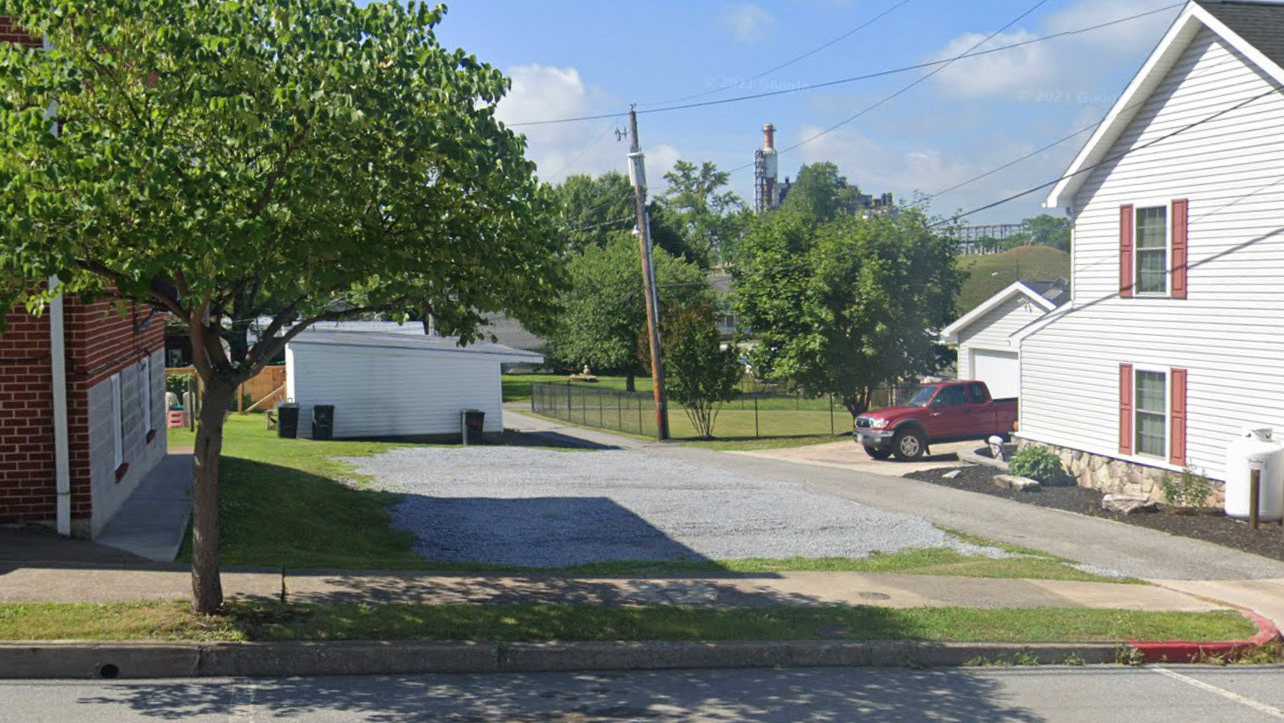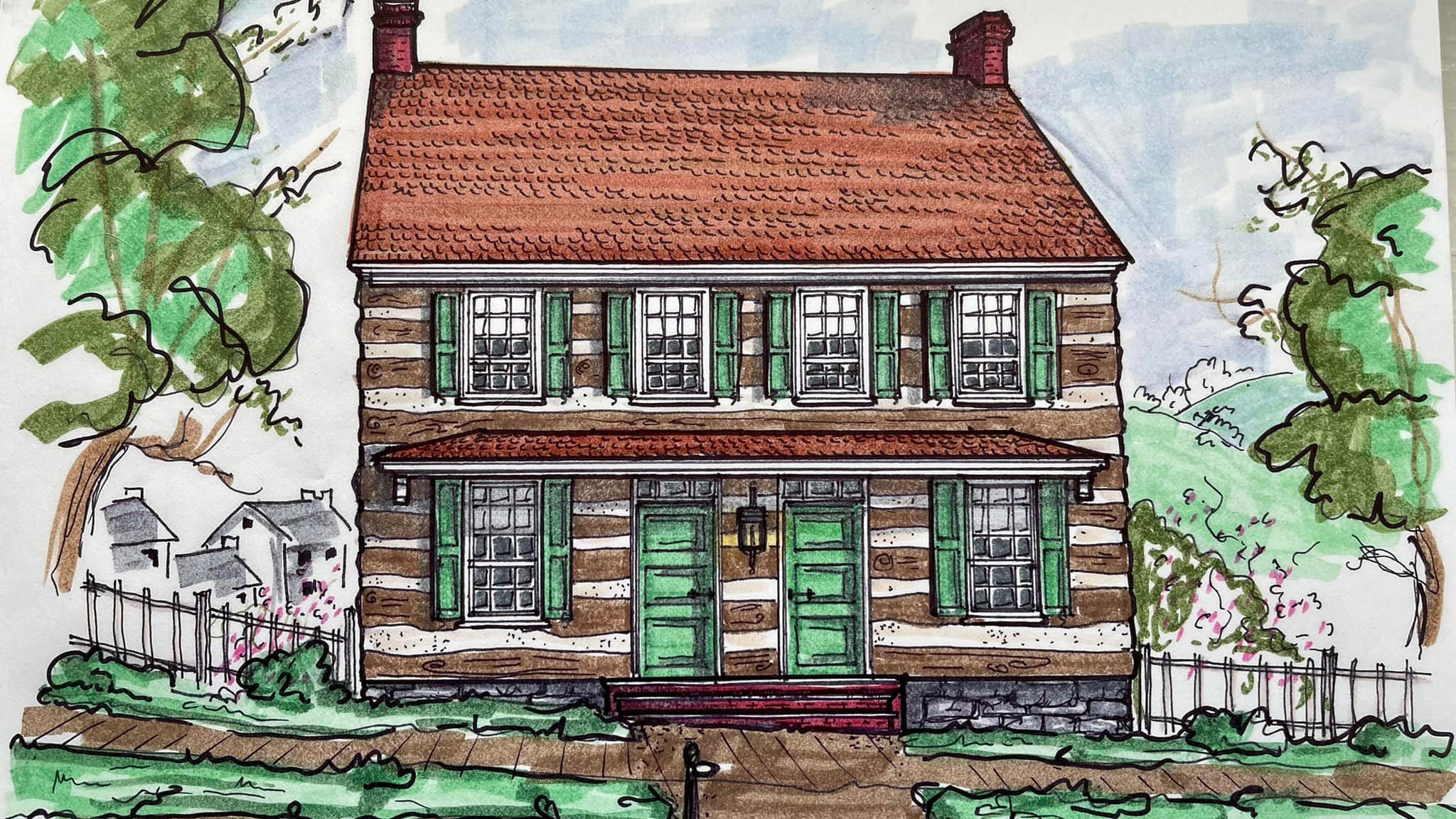Two lovely historic homes are nestled along the western side of South Conococheague Street, between Salisbury and Church Streets, on original lot 114. Although the two houses are very different in style, they share one fundamental fact: they were both built by the same family. The larger house on the northern half of the lot closest to Salisbury was constructed with Williamsport's famous Cushwa Brick. The smaller one was built in 1820 using logs. The brick house is two stories tall, three bays wide, with Common or American Bond brickwork at all elevations. Paired brick chimneys, built within the wall, crown the roofline on the north side. A hipped roof porch supported by round fluted columns spans the facade. Accenting the property along the sidewalk is a beautiful brick wall with planters on top filled with bright annuals. The log house is sheathed in white siding and is one and a half stories tall. A one-bay porch with a shed-style roof covers the front door. Long ago, both houses had smaller paned windows replaced with new single-pane sashes.
Martin Ensminger leased lot 114 from Edward Green Williams in early 1820 with the standard terms of building a house of at least 20x20 using brick, stone, log, or frame and fence the lot, etc. The lease stipulates also having to remit several bushels of good wheat annually as payment. Martin was born in Williamsport in 1788. Around the same time he leased the lot, Martin was planning to marry young Margaret Smith (b.1804), and he no doubt contracted lot 114 to set up a homestead. They were married in 1821 and had six children, many of whom were likely born in the log house.
The Ensmingers are genuinely one of Williamsport's founding families. Martin's father, Christian Ensminger (1759-1816), and his uncle Henry Ludwig Ensminger (b.1753) moved to Williamsport from Lancaster County, Pa, about 1787-1788 to settle in the new town. Martin's occupation in his early years is unclear, but he did own several acres of land just north of town "at the second culvert north of Williamsport between the C&O Canal and the Potomac River." We should surmise that he was involved in shipping. According to an 1852 newspaper article, Martin was appointed as Williamsport's "Coal Inspector" as his occupation in his later years; he passed away in 1860. In his will, he leaves one-third to his wife Margaret, and the rest split between his children, except for his daughter Margaret Castle. Martin and his wife must have disapproved of her marriage to Isreal Castle; her share ultimately went to her son Alvey. Martin and Margaret's fourth child Henry Ensminger (1829-1895), and his wife, Margaret Jane Zimmerly (1847-1908), purchased the lot and log house for $350 from his mother's estate in 1873.
Henry appeared in the 1850 census as a Blacksmith, and later in 1863, Henry was registered with the draft for the Civil War along with several other Ensminger men; at that time, he was unmarried and listed as a carpenter. Henry and "Jane" must have prospered in the years after the war, and sometime between 1873 and 1877, they built their stylish new brick home next to the small long house Henry was born in more than 40 years before. Just a few years before he passed, Henry Jackson Ensminger deeded the homes to his wife. A few years later, before her passing, Margaret/"Jane" deeded her children, Henry Jr., Martha Ann, and Mary Pryor, the property for "love and affection." Henry Jr. and Martha passed away in 1929 and 1935, respectively, leaving Mary as the sole owner. Mary's daughter Effie Pryor (1891-1974) married Charles Brown (1891-1970) in 19??.
Charles's father was born in Bohemia, part of the Czech Republic, and immigrated to the United States in the late 1880s. In the 1920-1950 census, Charles was listed as a laborer at the Cushwa Brickyard and Effie as a housewife. Effie and Charles had five sons. When Effie passed away in 1974, the five boys split the estate. Harry Brown sold the lot to his niece Stephanie Tracy and her husband in 1977. Stephanie and her family lived in/owned the home for the next twenty-nine years when they sold it to her brother, Charles Brown III, and his wife, Joyce.
Charles and Joyce have lived in Williamsport their whole lives and hold deep roots here in Williamsport. Charles or "Junior," as most people know him, and Joyce own a successful construction business and, over many years, have acquired a large number of other properties, which they maintain beautifully and rent out. Charles/Junior has been involved in public service and on the Williamsport Town Council for many years. The lovely old homes stand today, beautifully cared for by a family that cares deeply for them and this town. Charles is the third Great-Grandson of Martin Ensmiger; the property has been owned by direct descent from the Ensminger Family for more than 200 years, which is astonishing. The citizens of Williamsport are grateful to Junior and Joyce for the tireless work they do to continue to improve the beauty of our town and their civic pride.
Williamsport still has many beautiful historic buildings, but none to spare. Williamsport's historic buildings are important and should be better protected from demolition and major alterations.
